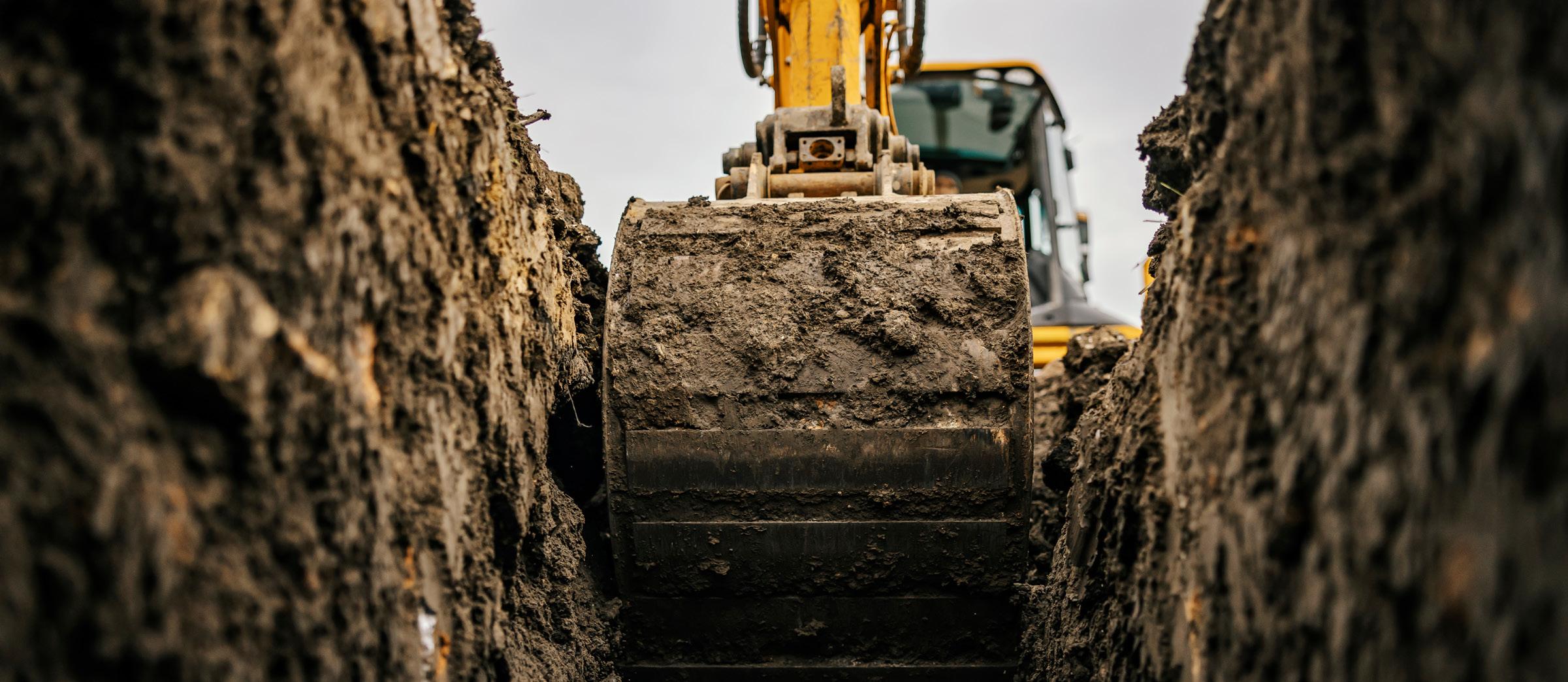

AVOID CONTACT WITH POWER LINES
Underground utilities
Contact with underground utilities is extremely dangerous! For everyone’s safety, please always practice safe digging and take the proper steps to avoid coming into contact with buried lines.
• ALWAYS file a locate request by calling 8-1-1 or visiting ndonecall.com to request a locate using ITIC. Each contractor needs their own excavation ticket; contractors cannot work off general contractors’ or homeowners’ tickets.
• Unless otherwise requested, excavation can begin on an excavation ticket when all utilities receiving the excavation ticket have provided a “marked” or “cleared” positive response or after the work-to-begin date on the excavation ticket.
• Site identification is now mandatory! Contractors must mark the proposed work area with white paint, stakes, or white flags before the locate request. Detailed drawings or maps of the work site or excavation route can be attached to the ticket for large or complex locate requests.
• Mechanical excavation is not permitted within 24 inches of either side of the outermost edges of underground facilities; never use mechanical digging equipment in this hand-dig zone.
• The ticket holder assumes ownership of materials used to mark the facilities and must use reasonable efforts to maintain locate markings during excavation.
• The ticket holder is responsible for removing all flags after the completion of the project.
Mistakes happen, and underground utilities may still be exposed despite strict adherence to marking guidelines. In this situation, use extreme caution!
• Never assume that any underground utility is abandoned. Making this assumption can easily prove to be a fatal mistake.
• Do not, under any circumstance, attempt to move, support, protect, or repair exposed underground utility in any fashion.
• As soon as the utility line is exposed, play it safe and contact the utility company. They will advise or handle the situation appropriately, allowing contractors and their employees to stay safe and avoid incurring excess expenses.
Overhead utilities
• Before working under or near overhead power lines, ensure that you maintain a safe distance from the lines and, for very high-voltage lines, ground any equipment, such as cranes, that can become energized.
• If working on power lines, ensure that the lines have been de-energized and grounded by the owner or operator of the lines.
• Other protective measures like guarding or insulating the lines help prevent accidental contact.
• Employees unqualified to work with electricity and mechanical equipment should remain at least 10 feet (3.05 meters) away from overhead power lines. If the voltage exceeds 50,000 volts, the clearance increases by 4 inches (10 centimeters) for each additional 10,000 volts.
• When mechanical equipment is operated near overhead lines, employees standing on the ground should avoid contact with the equipment unless it is located outside the danger zone. When factoring in the safe standoff distance, be sure to consider the equipment’s maximum reach.

The Tolerance Zone is a defined horizontal space from the outside wall or edge of an underground line or pipe.
Within this area you may carefully hand dig only, no mechanized equipment may be used within this tolerance zone area.
Applying the best practice tolerance zone can prevent unnecessary damages, service interruptions, and injuries.
The width of the facility
24 inches on either side of the underground facility
